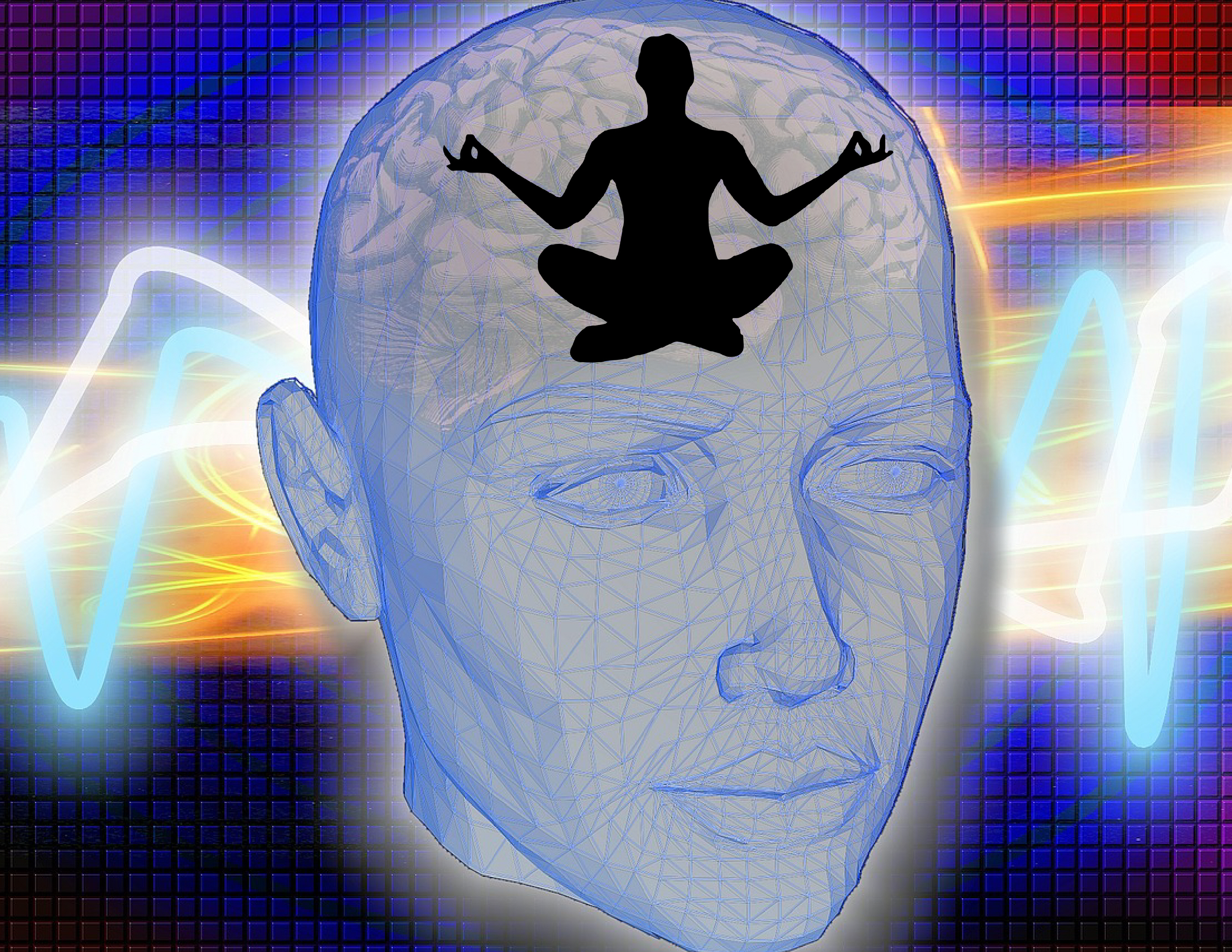 Submitted by Anjali Desai Ph.D. on
Submitted by Anjali Desai Ph.D. on

derivative image
The Yoga Sutras first of all defines Yoga as Samadhi or the state of Self-realization, for which all other aspects of Yoga are support factors. Such Self-realization is not an empowerment of the personal self, but the natural state of the seer or Purusha, the unconditioned consciousness within us, beyond the gunas, time, space and karma. For this daunting task to be achieved, the text prescribes detachment and disidentification from the activities of the mind (chitta vritti nirodha) that breed distortion and illusion. Once the mind is silent like a mirror it can reflect the Purusha, rather than get caught in its own disturbances, which is the usual case for the normal human being. This requires going beyond mind and ego.
Most notably, the Yoga Sutras outlines an in-depth theory of psychological suffering that also contains the keys how to remove it. This is its Klesha theory. The Kleshas are the main factors of affliction and suffering at the level of the mind, which affect the body as well. One can only discover one’s true Self if the kleshas are first removed.
Ignorance and the Five Kleshas
The Kleshas are five as:
- Avidya or ignorance
- Asmita or egoism
- Raga or attraction
- Dvesha or repulsion
- Abhinivesha as deep clinging and blind attachment
Avidya is the key term and must be understood in its proper sense, for which the usual translation of ignorance is at best an approximation that can be misleading. Avidya is not simply not-knowing, which is its literal meaning, but refers to a lower form of knowledge that can block us from discovering the higher knowledge that is the real truth. This lower or inferior knowledge is that of the outgoing mind that is superficial, partial, separative and divisive in its action, rooted in the limitations of desire, the senses, the body and our karmic conditioning. In other words avidya is a lower or false knowledge, the limited knowledge that arises from the human mind and senses attached to time/space appearances.
There is an underlying ignorance or lack of ultimate knowledge that we all must face in life. We are all born in a state of not knowing who we are or why we were born. And the knowledge we gather in life based on time and circumstances remains ever changing, uncertain, incomplete and occasionally completely wrong. We lack an existential knowledge of our inner being and eternal reality. We remain trapped in a relative outer knowledge that cannot solve the ultimate questions of life or reveal our true nature. That inner knowledge is the true vidya, of which the outer knowledge is a-vidya.
We must understand here that even all of science and our intellectual knowledge, rooted in name, form and number and looking outwardly, is a kind of avidya, not knowing or limited and potentially misleading information. It is a knowledge trapped in the shadow of name, form and number that cannot take us to the essence beyond all concepts.
Out of this underlying ignorance or limited knowledge arises asmita, or “I amness”, which is ego and arrogance. We create an image or idea of ourselves as a separate being, self-image or bodily identity in the realm of ignorance or time/space illusion. We think we know when we really do not know. We take our knowledge that is partial, divisive and biased, as the real truth. Asmita colors our knowledge with self-interest and ego-based agendas. We project what benefits us to be true and what does not benefit us to be false. We create a limit identity for ourselves based upon the body that is bound by time and death, in which our inner identity in consciousness is lost and forgotten.
Out of this ego compulsion, the dualities of attraction and repulsion (raga and dvesha) naturally arise in its divided view of life. This includes the whole gamut of love and hate, like and dislike, desire and avoidance, leading to every sort of emotional complication and affliction. Out of ignorance and ego we fall into the web of duality. We get caught in the turning wheel of sorrow or Samsara, running after what we think is good and running away from what we think is bad, though the two are never certain and one can easily become the other.
This incessant spinning of the wheel of attraction and repulsion results in abhinivesha, which is becoming hopelessly enmeshed in this dualistic process – asserting and defending ourselves within it as if it were our real purpose in existence. Abhinivesha literally means a total immersion, but in the negative sense of becoming tied to the wheel of suffering. It is often translated as clinging to life. But more accurately it refers to deep-seated conditioning, trauma and addiction, a factor of tamas or karmic inertia and entropy. Abhinivesha, our complete submergence in the world of duality, even prevents us from questioning the process of the Kleshas and binds us to sorrow. We are like a gambler so caught up in the game we cannot question why we are playing it at all.
Removing Avidya
The key to end the suffering of the Kleshas as the Yoga Sutras state resides in removing avidya. Then the other Kleshas will wither away with their root cut off. For this purpose we must first recognize that the knowledge of the outgoing mind based upon name, form and number is inherently limited and superficial. It can help us navigate outwardly in the material world, but cannot uncover the spiritual secret behind our lives. Our outer knowledge is an inner ignorance that must be set aside for an inner knowing to flower. As long as our vision is outwardly oriented we cannot see the inner reality, contact our inner being, or discover any lasting wisdom.
The true knowledge, as the Yoga Sutras states, arises from samadhi, a complete and silent concentration of the mind on its object of examination, without any conditioned reactions of the mind. Samadhi is direct experience of reality and direct perception of Being itself. It is abiding in the state of the seer and knower as detached from the outer objects and qualities, thoughts and emotions. This true knowledge has no conceptual content and cannot be described or defined in any final manner. It can be compared with pure light, boundless space, unqualified existence, unshakeable peace and blissful contentment. It reflects an inner unitary awareness, not an outer pursuit of action and becoming. It holds the entire world like waves that come and go on its unchanging depths. Removing this avidya is not easy because it requires an entirely different sense of reality than our ordinary human existence.
Promoting Unitary Awareness
How can we arrive at this higher knowledge that is beyond all words and all duality? The way is simple but not easy to accomplish. We must unify our prana and attention and draw it within to our inner Self at the core of our being. We must learn to observe the movements of the mind and senses with detachment, as if they had nothing to do with us but were simply outer phenomena like clouds in the sky. We must create stillness at a deep level of body, prana, senses and mind, not born of force or effort but of deep relaxation, letting go, receptivity and surrender within. This is the way of Patanjali’s Raja Yoga. It is only possible when we pursue a Yoga sadhana, follow a dharmic life, and look beyond the appearances of the world to the inner truth of consciousness. All the Vedic sciences and disciplines aid us in this great endeavor. Yet it requires ultimately developing moment-by-moment awareness, in which we no longer take the movements of the mind to be real.
As long as we cannot move beyond the outer conceptual knowing to the inner light of pure consciousness we must suffer from error and sorrow. Our judgments will not be reliable. We will run after what feels good or seems good and miss the true good that is hidden behind the scenes. True knowledge is an unknowing to the outer knowledge of body and mind. Yet it is a direct knowing that does not require any word, idea or instrument but is self-revealing.
The true practice of Yoga is a meditative inquiry into the essence of reality, our true Self that is as the Upanishads state – the mind behind the mind, the speech behind speech, the prana behind prana, the seer behind the eye, the hearer behind the ear. This takes us from the body and mind to their core energy of awareness.
Then we will realize that all life is an experience within our own greater Self-reality that encompasses the entire universe. In that insight we can let go of mind and body, ego and memory and embrace our true Self in all and behind all. This is the ultimate yogic cure to psychological suffering, which is also the discovering of eternal peace and bliss. Such is the true teaching of the Yoga Sutras for which all eight limbs of Yoga are but preparing the way. It is abiding in the true nature of the Seer and no longer identifying with anything seen.
* The Yoga Sutras of Rishi Patanjali portrays a psychological view of Yoga, not a physical Yoga, which is only mentioned in passing.
- 510 reads